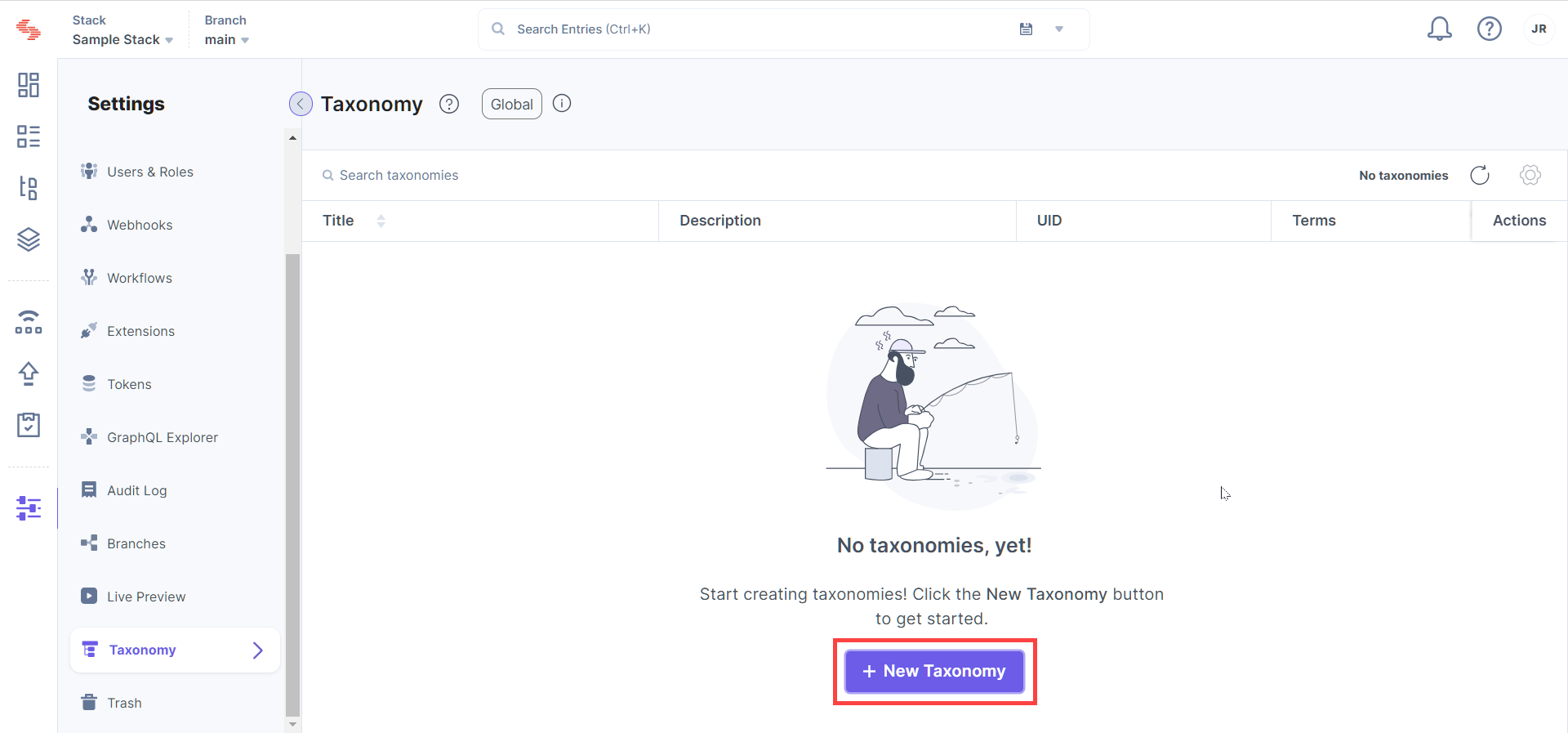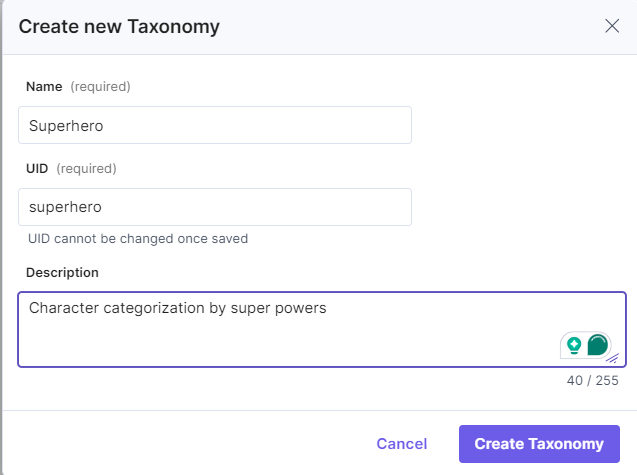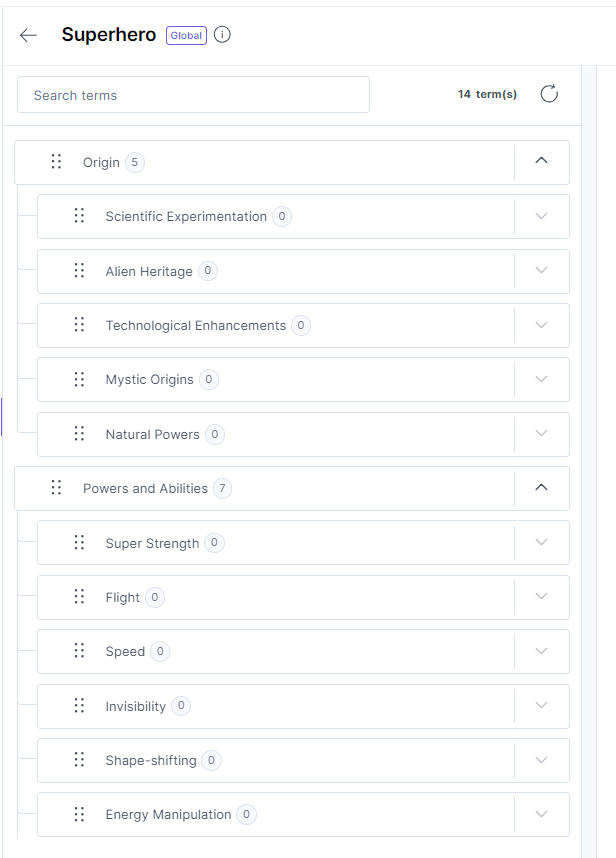Creating a Taxonomy
Introduction: In this module, you will learn how to create a taxonomy within Contentstack to effectively organize and structure your website's content.
Understanding Taxonomy: Taxonomies enable efficient content management and retrieval. Centrally managing taxonomies allow organizations to classify their content in a structured manner, enabling them to easily find content and also retrieve content based on the taxonomy and terms applied. In this course, we will look at how we can use taxonomies in Contentstack to structure and organize our content.
Step-by-Step Guide:
-
Accessing Taxonomy Settings:
-
Log in to your Contentstack account.
-
Navigate to the desired stack where you want to create a taxonomy.
-
Click on the "Settings" icon (shortcut: press "S") located on the left navigation panel.
-
Select "Taxonomy" from the settings menu.
-

-
Creating a New Taxonomy:
-
Once in the Taxonomy section, click on the "+ New Taxonomy" button.
-
Enter a Name for your taxonomy. Please note that the Unique ID will be auto-generated and can be edited until the taxonomy is saved. Once saved, the UID cannot be changed.
-
Optionally, you can add a 'Description' of your taxonomy to provide additional context.
-
Click on "Create Taxonomy" to finalize the creation process.
-

Adding Terms to the Taxonomy:
-
Within your newly created taxonomy, you can begin adding terms associated with the taxonomy.
-
For example, if your taxonomy is based on "Superhero," you can create terms such as "Natural Powers," "Mystic Origins," "Scientific Experimentation," "Super Strength," etc.
-
This step allows you to further organize and classify your content based on specific criteria.

Next Up
Video
Creating a Taxonomy Walkthrough
1m 16s
